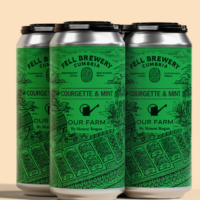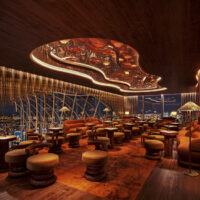An extensive report on this year’s Champagne Masters, including all the medallists, a look at the top-performing categories, the best wines of the competition, and the styles of fizz we liked – and those we weren’t so enamoured with too…
 Tell anyone outside the wine trade that you’ve spent a day tasting Champagne, and one can hardly expect sympathy – jealousy is the most common reaction. However, assessing this fine French fizz is hard work. If I consider all the Global Wine Masters competitions the drinks business runs, the Champagne Masters is the most challenging. It requires intense concentration to fairly and accurately judge a delicate drink, with many components to consider, from the quality of the bubbles, to the acid-structure of the wine, character of the fruit, along with lees-aged flavours – and, where relevant, quality of the reserve wine – along with integration of the dosage, where present.
Tell anyone outside the wine trade that you’ve spent a day tasting Champagne, and one can hardly expect sympathy – jealousy is the most common reaction. However, assessing this fine French fizz is hard work. If I consider all the Global Wine Masters competitions the drinks business runs, the Champagne Masters is the most challenging. It requires intense concentration to fairly and accurately judge a delicate drink, with many components to consider, from the quality of the bubbles, to the acid-structure of the wine, character of the fruit, along with lees-aged flavours – and, where relevant, quality of the reserve wine – along with integration of the dosage, where present.
Stylistic preferences
There’s a further element that makes this competition demanding for the taster, and especially the chair. This concerns stylistic preference. I know my own leanings from more than a decade’s worth of regular Champagne sampling, and that is for a relatively rich style of fizz with clearly identifiable aromas/flavours from extended ageing on the lees and protection from oxygen, such as grilled nuts or toasted bread. This type of sparkling is termed ‘reductive’ by the trade, referring to fact that these roasted characters tend to emerge in the absence of exposure to air during the process, and in the headspace too (which explains the increased prominence of smoky/toasty aromas in larger formats, where the ratio of oxygen to fizz is altered).
However, I am aware that not all tasters share my preference for these traits. I find some judges much more forgiving of the opposing, oxidative style of fizz. While I enjoy the honeyed flavours found in older bottles, and the softer sparkling sensation too, I am less keen on the more aldehydic characteristics that can emerge from the less protective handling of Champagne making, such as the taste of bruised apples. But for others, this can be seen to add an extra layer of flavour.
Dryness in Champagne can be another source of debate, while rosé style is always a subject of extended discussion. But the results of a competition such as the Champagne Masters does not reflect one person’s preferences but the collective views of a professional jury. And the word ‘professional’ is key, because these are tasters that may have different stylistic predilections, but have the experience to know that it’s necessary to put aside personal tastes in the desire to fairly assess the fizz in front of them. In other words, whether you favour more oxidative or reductive flavours in fine Champagne, it is the overall quality of the fizz that’s being rated.
Having said that, before leaving the question of style, it was certainly the case that extremes of either Champagne type performed less well. As long-standing Global Masters judge and fellow chair, Jonathan Pedley said after the tasting: “It was interesting to see that the debate over the degree of reduction/oxidation in premium wines is alive and well, in this case in the context of Champagne. Every taster has their own preference or tolerance, but that the consensus we edged towards is that a reductive or oxidative component in a wine can add complexity and interest, but if sulphidic aromas on one side or aldehydic on the other come to dominate the nose then complexity is lost.”
The tasting also revealed marked differences in the character of older Champagnes. There are too many factors to list that could be the cause of this, but this year’s competition showed (again), how some more mature Champagnes, be they in the vintage or prestige cuvée category, had delicious flavours of honey, dried fruit, coffee and lightly toasted brioche, while others seemed to have characters that were probably more kindly described as a touch tired. Pedley said: “I remain fascinated by the way Champagne ages: the right sort of development brings glorious nutty, honeyed complexity, whereas the wrong sort of age results in grim cabbagey staleness.“
On the subject of pure quality, however, there was agreement: the general standard of Champagne was high. I have written about the reasons for this in previous reports from former tastings, but it is clear that improved vineyard management, coupled with a good run of vintages and a better understanding of when to pick the grapes is yielding base wines that are clean, fresh, and have a fruity depth. In contrast, Pedley said that 25 years ago, “many wines were green and unripe, often with clumsy dosage masking raw acidity”.
Complexity and richness
It has also been noted before following a Champagne Masters tasting, that the non-vintage category contains wines of greater class, complexity, richness, and softness, something ascribed not only to better management of the fruit in the vineyard and cellar, but also the increased use of reserve wine – now commonly up to one third of the blend, and taking in a broader span of harvests than historically.
Having said that, the lesser-scoring Champagnes of this category were those where this reserve wine component seems to sit uncomfortably with the younger ‘base’ wine – something one imagines would be solved by a longer time spent maturing post-disgorgement. In keeping with our results last year, we witnessed a very good base standard of relatively affordable Brut NV Champagne from the grower-cooperative brands of the region: with Collet, Castelnau and Nicolas Feuillatte all gaining Silvers in the sub-£30 price brand, and Palmer, along with Pannier, taking a Gold in the £30-£50 flight.
In this latter price category, the quantity of Golds awarded was notable. Beyond the co-operative brands, the top maisons performed admirably, be they the region’s biggest names, Moët and Veuve Clicquot, along with slightly smaller houses, Piper and Pommery. We were also impressed by the NVs from more boutique operations, as well as relative newcomers to the negociant Champagne model: Comtes de Dampierre (founded in 1986) and Brimoncourt (launched in 2009).
The latter also gained a Gold for its extra brut in the £50-plus category of NV Champagne, and, with a dosage of just 2g/l, showed how the selection of ripe wines can yield a rounded and pleasurable fizz, even when the sugar level is extremely low. The same was true of the Henri Giraud Esprit Nature, which, despite its dryness, had the creaminess of a white Burgundy, no doubt due to this producer’s use of oak casks to age its reserve wines.
The sole Master among the NVs was Pommery’s Brut Apenage, which showed some youthful zesty chalky characters, a touch of white peach, and some honeyed, biscuity notes from extended ageing, making it both refreshing, but also ripe and layered in style.

Beautiful fizz
Moving into the vintage Champagnes, it was houses Piper and Charles Heidsieck that shone, both of which share a parent company in EPI. Piper, however, achieved the only Master in this category – which it picked up for its latest expression from the first-rate 2012 harvest. This beautiful fizz combined characters of beeswax, bitter lemon and toasted hazlenuts, and was layered and textured, but still taut and mouth-cleansing. Alfred Gratien, Castelnau, Lanson and Pannier were further high performers in the vintage category, and at less than £50 at retail – showing the relative value of this Champagne type, especially when compared with Prestige Cuvées. “Given the psychotic pricing of the Prestige Cuvées, the traditional Vintage bracket can offer high quality at an almost sensible price,” said Pedley.
Nevertheless, it was within this peak of the Champagne pyramid that we unearthed the greatest expressions, with four Masters awarded, almost two thirds of the total. And the producer mix of these great Champagnes was varied, with Heidsieck houses Charles and Piper wowing with their Blanc de Millenaires and Rare cuvées respectively, along with a cooperative-grower brand, Collet (for its Esprit Couture 2007), and aforementioned comparatively young négociant name Comtes de Dampierre, with the Prestige 2004.
Commenting on this aspect of the tasting, Pedley said: “There were some splendid wines here, but the predatory pricing can leave you gasping for air. It is also worth saying that within this category there is a marked diversity of style. A couple of the wines seemed to be relatively youthful and fruity, whereas others followed the more familiar mature and complex pattern. I guess that Prestige Cuvée wines will always be more subject to the whims of the winemaker or marketer than, say, a traditional vintage wine.”
Pristine wines
As for the rest of the categories, it was perhaps notable that none of the Blanc de Noirs picked up a Gold. Although the sample set was small, it does support a long-held belief that Champagne benefits from Chardonnay. Meanwhile, the pure Chardonnay Champagnes did reach some high points, with pristine wines from Delamotte and Vollereaux particular. Finally, with the pink fizz, we saw a delicious NV sample from Charles Heidsieck, along with its wonderful vintage rosé, and an outstanding one from sister house Piper.
Indeed, the latter’s Rare Rosé 2008 wowed, with its creamy coffee aromas and zesty, fresh mouthfeel with a touch of exotic fruit flavours. But it should be added that this category, relative to the price of the Champagnes judged in the tasting, performed the least well, with some of the entries marked down because of a lack of autolytic character, or barely perceptible red berry fruit, as well as, on occasion, a phenolic note. Drawing attention to the inflated prices of pink Champagne relative to other styles, Pedley said: “I do enjoy a good rosé Champagne but to my dying day I will resent having to pay a premium to have a dollop of Pinot Noir added to the blend (or direct pressed for that matter).”
Over the following pages you can see all the medallists from this year’s competition, as well as comments from the judges (who are pictured below), and more information about the Global Sparkling Masters, including how to enter.





